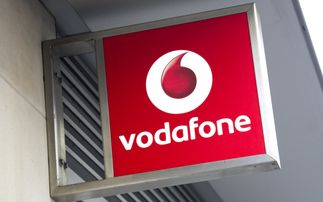Astronomers used GRAVITY instrument installed on European Southern Observatory's Very Large Telescope to study the massive exoplanet
Astronomers have used a ground-breaking optical interferometry technique to study a Jupiter-like exoplanet located about 129 light years from Earth.
The planet, dubbed HR8799e, has been described as a "super-Jupiter". It was first discovered in 2010 and was found to be orbiting a young star HR8799 in the Pegasus constellation.
In the current study, researchers observed HR8799e using the GRAVITY instrument installed on European Southern Observatory's (ESO) Very Large Telescope (VLT).
GRAVITY is known for its high sensitivity and resolution. Its main speciality is its ability to use a technique called optical interferometry, in which light beams from VLT's four unit telescopes (UTs) are combined together to create a virtual large telescope.
With its high sensitivity performance, GRAVITY is going to reveal a whole new world of planets, stars and galactic centres
VLT's each UT features 8.2-m primary mirror, and combining four UTs creates a virtual telescope with 25 times more resolution than a single UT. The spatial resolution achieved by GRAVITY is equivalent of a telescope of up to 100 metres in diameter.
This innovative technique enabled astronomers to create an imaging system that was sensitive enough to separate light coming from the planet's atmosphere from the light coming from the host star.
"GRAVITY is born from the desire to observe very small details on faint objects like the centres of galaxies," explains Xavier Haubois, ESO instrument fellow of GRAVITY.
"With its high sensitivity performance, GRAVITY is going to reveal a whole new world of planets, stars and galactic centres that were previously out of reach because they were too faint for the previous instruments."
With new observations, astronomers found that HR8799e is actually a huge ball of gas, with complex atmosphere. It features a stormy surface with swirling clouds of silicate and iron. It is massive in size, and is likely much bigger and younger than any planet in our Solar System.
The analysis further revealed that HR8799e's atmosphere contains much more carbon monoxide than methane, a surprising result, according to scientists.
They believe that vertical winds within HR8799e's atmosphere could be preventing methane-forming reaction between carbon monoxide and hydrogen.
HR8799e is just 30 million years old, and completely inhospitable. It is filled with huge amounts of leftover energy from its formation, and is also characterised by a powerful greenhouse effect, which heats it to about 1000 degrees Celsius.
The detailed findings of the study are published in the journal Astronomy and Astrophysics.
Delta is a new market intelligence service from Computing to help CIOs and other IT decision makers make smarter purchasing decisions - decisions informed by the knowledge and experience of other CIOs and IT decision makers.
Delta is free from vendor sponsorship or influence of any kind, and is guided by a steering committee of well-known CIOs, such as Charles Ewen, Christina Scott, Steve Capper and Laura Meyer.
Ten crucial technology areas are already covered at launch, with more data appearing and more areas being covered every week. Sign-up here for your free trial of the Computing Delta website.
















